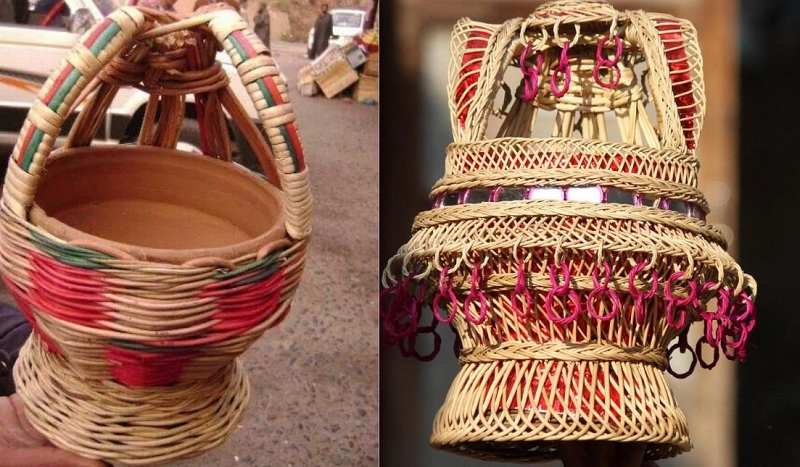The Kangri proves to be more than simply a transportable earthenware firepot in the jaw-dropping scenery of Kashmir, where the winter’s bite can bring temperatures as low as -10°C. It has long been a vital part of the lives of the Kashmiri people and a pillar of their culture. When worn inside the traditional Pheran, a long, loose woolen cloak, the Kangri proudly represents Kashmiri identity and tradition while also offering much-needed warmth during the chilly winter months.
While the exact genesis of the Kangri remains enigmatic, historical accounts hint at its introduction to Kashmir during the Mughal era. Theories abound, speculating whether it was brought by Italian artisans in the Mughal emperor’s entourage or inspired by similar firepots from Central Asia. Regardless of its origin, the Kangri seamlessly integrated into Kashmiri culture, quickly evolving from a mere heating device to an indispensable emblem of practicality and tradition.
The Kangri is a cultural object that is deeply ingrained in Kashmiri society and serves as more than just a means of warmth. Each Kangri is a work of art, adorned with elaborate designs and vibrant embroidery, making it a cherished gift during weddings and special occasions. Beyond its aesthetic allure, the Kangri embodies hospitality, often employed to warm guests arriving from outside Kashmir. In the act of sharing its warmth, the Kangri fosters a sense of community and connection, reflecting the deep-rooted social values of the Kashmiri people.
In the face of modernity, the Kangri has encountered formidable competition from electric heaters and kerosene stoves. Yet, its popularity endures, especially in the rural pockets of Kashmir where access to electricity remains scarce. Moreover, the Kangri has found favor among those who prioritize sustainability, recognizing the environmental impact associated with contemporary heating methods. Its continued use underscores a commitment to tradition and a consciousness of the delicate ecological balance.
The enduring appeal of the Kangri lies in its versatility and sustainability. Fuelled by a range of materials, from charcoal and wood to even dried cow dung, the Kangri emerges as a low-cost, electricity-free heating solution. It’s simple yet effective design makes it accessible to many Kashmiri households, providing not only warmth but also a sustainable alternative in a world increasingly conscious of ecological footprints.
Beyond its utilitarian function, the Kangri carries profound cultural and social significance. Serving as a symbol of Kashmiri hospitality, it extends a warm embrace to guests, enveloping them in the traditions of the region. Furthermore, the Kangri often transforms into a focal point for social gatherings, where friends and family gather around its comforting warmth, engaging in storytelling and other communal activities that define the social fabric of Kashmiri life.
The Kangri, in its evolution over the centuries, reflects the adaptive spirit of the Kashmiri people. While earlier versions were crafted from various materials, including clay, wood, and metal, the prevalence of earthenware Kangris has risen due to their lightweight nature, durability, and cost-effectiveness. Modern Kangris come equipped with user-friendly enhancements, such as lids, handles, and ventilation systems, ensuring safety and ease of use without compromising their fundamental purpose of providing warmth and comfort.
The Kangri stands as an enduring symbol of Kashmiri heritage, embodying the resilience and resourcefulness of its people. As a versatile, sustainable, and culturally significant source of heat, the Kangri remains an essential companion during the unforgiving winters of Kashmir. Its ability to adapt, embrace tradition, and maintain cultural importance ensures that the Kangri will continue to be an integral part of Kashmiri life for generations to come, a testament to the timelessness of tradition in the face of changing times.
(Author is a regular columnist and can be reached at: [email protected])










